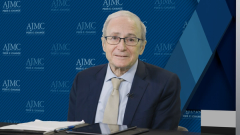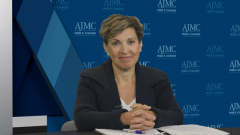
IL-36 and Other Mutations in Generalized Pustular Psoriasis
Mark G. Lebwohl, MD, discusses how IL-36 mutations can play a part in disease presentation and how IL-17 and IL-23 pathways are more often implicated in plaque psoriasis.
Episodes in this series

Ryan Haumschild, PharmD, MS, MBA: A lot of times when we think of psoriasis, we think of IL [interleukin]-17s and IL-23s, and there are huge treatment pathways for those agents in psoriasis. But we know with generalized pustular psoriasis [GPP], IL-36 plays a unique role. Talk to us a little bit about what’s different in IL-36 and why is it uniquely positioned for GPP patients.
Mark G. Lebwohl, MD: That’s a great question and it really points to what should be the standard of care today. When we did the IL-36 trials, there was a group of patients who inherit pustular psoriasis and they had a deficiency of the IL-36 receptor antagonist. So getting rid of that receptor antagonist allows IL-36 to go haywire. IL-36 clearly causes pustular psoriasis. When we introduced spesolimab, which is the anti-IL-36 receptor antibody, literally in a day you see patients go from being on the verge of death to almost normal. Certainly, within a week. There’s a postulation score that was reported in the clinical trials, and in 1 week 54% of the patients who got the active drug to 0; no pustular in a week compared to the placebo group with 6%. They got lucky in 1 patient. And that’s as dramatic a difference as I can say. Now, when you use any of these other drugs, and I know my residents often will use the IL-17 blockers because for plaque psoriasis IL-17 is very fast. They’re the fastest drugs we have. [They are] even faster than old drugs like cyclosporine or retinoids, which can be very fast too when they work, which is not that often. They were so desperate to get drugs for this that they allowed an end point of any improvement at all. Minimal improvement meant the drug worked. If they went from a score of 51 to 50, that was an improvement and that was used as a measure of achievement. The other points are when you look at the graphs in all those studies; they take place over many weeks to even months to achieve that end point. We’re talking about a drug where the next day the patient’s better. So really quite miraculous. And I should say the primary end point was a week, not a month, not several months like these other drugs.
Ryan Haumschild, PharmD, MS, MBA: Well, much faster. And like you said, around the etiology, you’ve got to have fast treatment for the patient, potentially hospitalization, and it might be more of that urgent treatment that’s needed compared to other forms of psoriasis.
Transcript edited for clarity.
Newsletter
Stay ahead of policy, cost, and value—subscribe to AJMC for expert insights at the intersection of clinical care and health economics.







































